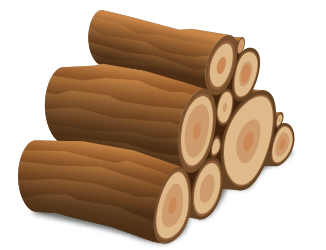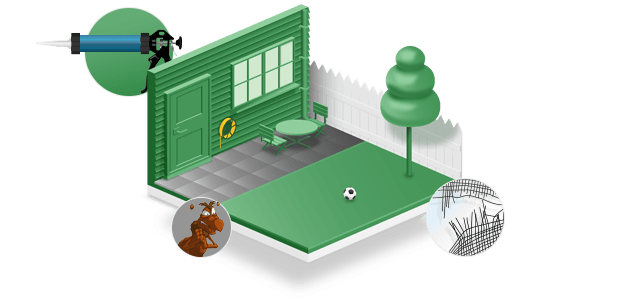Find the Nest
Regularly inspect your home and yard for nests to avoid having a bigger problem in the future.
5 Common Nest Locations

- Under roof awnings or behind shutters
- Hanging from tree branches
- Fence posts and play sets
- Hollow tree trunks or stacked wood
- Yellowjacket nests are often hidden underground, so carefully check your lawn and mulched areas
If Looks Could Kill
Spot Yellowjacket Nests Like a Detective
Yellowjacket nests are notoriously tough to find, but here are some clues to help you track them down:
- Look for a small hole in the ground, about the diameter of a pencil. It may have a small mound of dirt around the opening.
- The sure sign of a nest is watching yellowjackets go in and out of that hole, especially during the daytime when they are active.
- Nests are often are in the shade or in shaded areas, so check areas under trees or awnings.
Let the Bees Be!
It’s important to identify what kind of bug you’re working with before you try to get rid of it. This is especially important when dealing with bees. Bees are typically hairy, while wasps, hornets, and yellowjackets are not. They’re also much more docile and are extremely beneficial to us as pollinators. Most outdoor bee colonies can be ignored without ever becoming an issue. If they must be removed, we recommend contacting a beekeeper to do it safely and properly.
Ouch! It Stung Me
Treating a wasp or hornet nest is not an easy task. If you’re stung and experience any severe symptoms, get medical attention ASAP!
Use Raid® Wasp & Hornet Foam Bug Killer for outdoor nests. Avoid spraying surrounding vegetation directly. Once the nest is thoroughly saturated, it can be removed or left alone—either way it won’t be used again by other wasps! Just be sure to wait at least 48hours before removing the nest. Be sure to read the label before use.
6 Tips for Treating Nests
- Treat at dusk or dawn when the insects are less likely to be active.
- Wear gloves and long sleeves to avoid being stung.
- Spray Raid® Wasp & Hornet Foam Bug Killer to kill the entire nest. Be sure to read the label before use.
- When spraying, make sure you stand away from the nest and not directly underneath.
- Spray when the air is calm.
- Never attempt to treat nests alone. Use the buddy system or ask someone else to treat it if you’re allergic to stings.
Shut ‘Em Out
If you notice wasps, hornets, or yellowjackets inside, chances are there will be just one or two at a time. They’re often found indoors during the spring when queens are looking for nesting sites, or in the late summer and early fall when they are looking for sugary foods. If you notice many of them indoors, then chances are they’ve made a nest somewhere in your home.

4 Tips to Keep Them Out
- Make sure all door and window cracks are sealed
- Inspect window screens to make sure there aren’t any holes
- Keep garbage containers sealed and away from entrances
- Rinse recycling materials before putting them in the bin